Author: Linda Hughes
Homecoming Queen – A Look Back
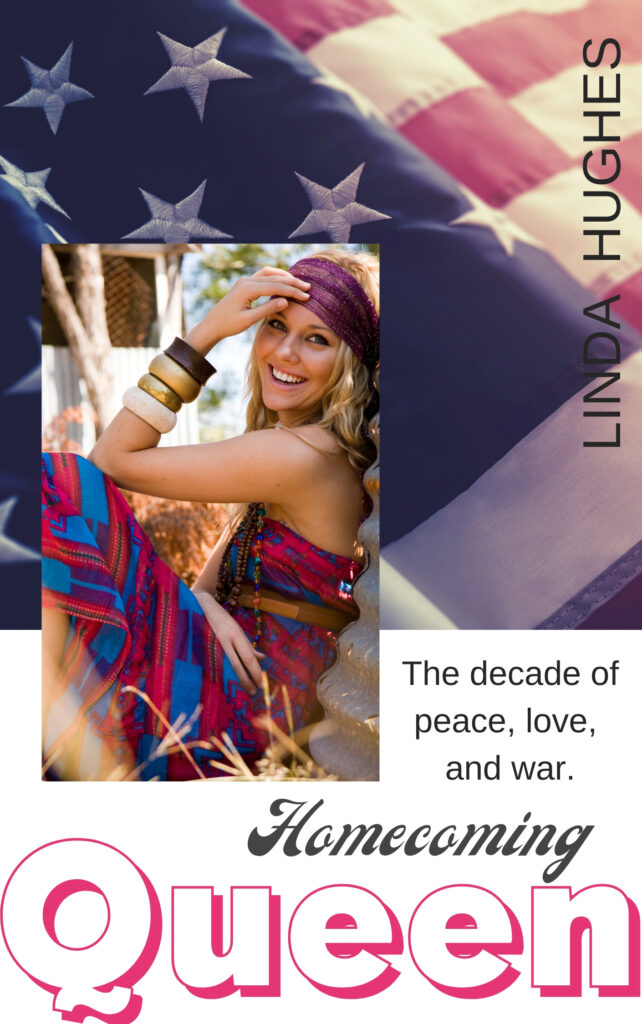
It’s autumn, homecoming season for schools and universities. I published my first novel twenty years ago, based on my own experience as homecoming queen at Central Michigan University in 1970. It wasn’t as glamorous as it sounds. In fact, it wasn’t glamorous at all.
Nowadays I seldom think about it but when I do, I’m pleased with how my book reveals all that I learned in the time between the actual event and the writing of the fictional story that tells a lot of truths.
Things that made me feel beaten up as it was happening eventually made me laugh – at the very least smile – and still do today. I learned a lot of hard but valuable lessons. Consequently, the memories now conjure up a wellspring of warm appreciation.
It occurs to me that if I were to run into a young person today who was disappointed in their homecoming like I was, be it because they were a football player who lost the game or a girl without a date, and if I tried to tell them it would be okay because that one event wouldn’t hold sway over their future, I know they wouldn’t believe me. More likely, they wouldn’t care what I had to say. Living is quite immediate when we’re young.
In my case, inexperience and innocence kept me from fully appreciating the positive side of that event, which initially left me feeling deflated and isolated. Interestingly, I now see that I was anything but isolated and, consequently, there was no reason to feel deflated.
It started when I decided, after four years of college (I was on a 5-year-plan) and three years of working in a restaurant (I had to work a lot; I was financially independent), that I wanted to spend a summer working in a resort town where I’d make more money. Luckily, I found a job at a “supper club.”
As required, I reported to work a day before my first shift to be fitted for a “uniform.” To my surprise, that turned out to be a teeny-tiny costume. I swear, even after that, I had no clue. I was working my first shift before I realized it was a house of burlesque. A classy one, true, with a fabulous blusey band, good food, lots of booze, opulent decor, and – yes – strippers. But these were dancers of the old-fashioned order who truly put on a performance.
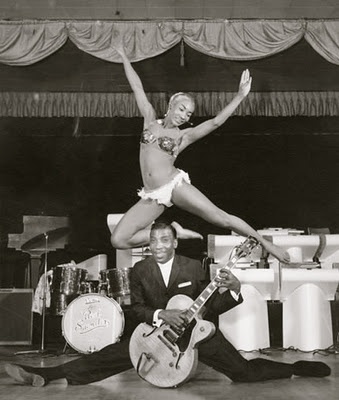
That story is a book unto itself, but suffice it to say I learned a lot that summer. I also came away with one of my best life-long friends, Lottie the Body.
Lottie loved pulling shy, self-conscious people up on stage and encouraging them to loosen up. That included me. She’d pull me up there and have me follow her dance moves. (There was no stripping, of course, during this part of her show.) For her, it was all about dancing and fun and life. She was pure joy.
Fast forward to a college dance club that fall. After work one night, I went out with my roommates. A man approached me and said he loved the way I danced. (Thank you, Lottie.) In that era, the band played a lot of Louie Louie, Proud Mary, and Rolling on a River. I loved the music. The man asked if their Veteran’s Club – they were Vietnam War veterans – could sponsor me for homecoming queen. Shocked and delighted, I said sure. I didn’t mention that I was sure I couldn’t possibly win. Beautiful sorority girls were always homecoming queen.
There was one other problem I had to tell them about. The spring before, I’d joined a college group that traveled to Washington, D.C., to protest the war. These guys had fought in that war. My group was entirely peaceful and totally respected returning soldiers. We didn’t want them to die in battle. They listened to me explain all that and were fine with it. They didn’t much like that war, either.
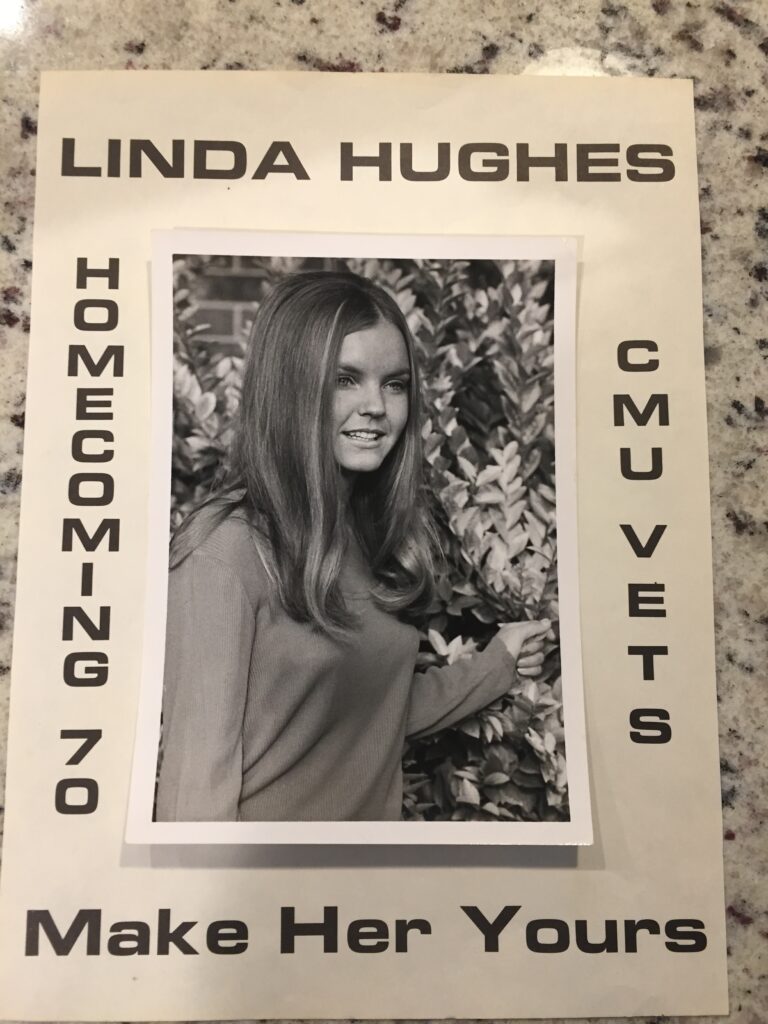
Between school and work I didn’t have a lot of time to campaign. When I did, I wore jeans and a sweater. The other candidates who were sponsored by sororities and fraternities wore gowns and stoles. I didn’t own a gown or a stole. They put up full-color posters; our zero budget only allowed for small fliers we could print off on school printers. The others were beautiful young women. I’ve always been more “sturdy.”
A young man I did not know showed up at my crumby apartment the day prior to the election. He annnouced that he was chairman of the homecoming committee and wanted to inform me that I needed to drop out. It seemed I wasn’t the “kind of girl” they wanted to represent their college. Not my college, mind you. His. I’d been a war protester. I’d worked at a strip club. (How he knew that, I had no idea.) I wasn’t in a sorority.
I refused. He got mad. We verbally sparred. He stormed out red-faced and fuming.
The next day I won the election by a landslide.
The committee insisted the Vets must have cheated. They invalidated the election and held another one. I won by even more. The committee asked the college president to rescind my eligibility. He refused.
Of course, I realized students weren’t voting for me – they didn’t even know me – as much as they were voting against the establishment. But that was okay. I was supremely honored. I conjured up a fantasy that now my life would magically change for the better. Doors would open. Men would line up to ask me out. A fabulous job offer would fall my way.
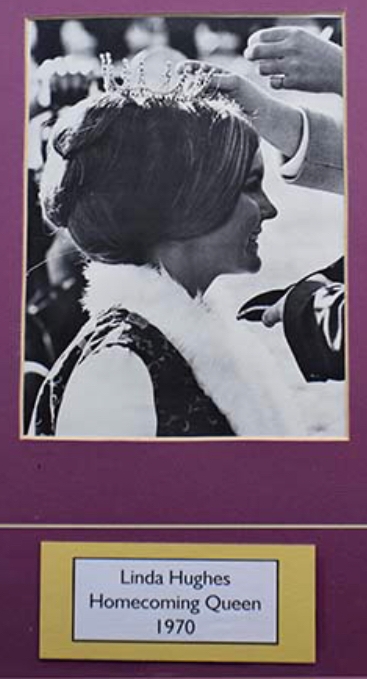
Homecoming turned out to be a beautiful autumn day. There was a parade and the game. It was the ball in the evening when things fell apart. My date showed up drunk. At first we had a good time at the dance but didn’t stay long because he was about to pass out. I drove him to his place in his car, left him in a sound sleep, and walked home across a muddy field in my long white outfit, red velvet robe, and (once) white satin pumps. I yanked off my crown and carried it – no reason to wear it anymore.
By eleven o’clock I was in a pizza parlor with my roommate chowing down to drown my sorrows. I’d combed out my ginormous helmet hairdo and put in pigtails and thrown on jeans. I sported a blotchy, puffy face from crying. My date and I were supposed to have gone to a party the Vet’s held after the ball. I couldn’t contact anyone there (no cell phones back then) and had no transportation. So pizza next door to my apartment with my roommate was the only option I saw for “celebrating.”
We couldn’t help overhearing two guys arguing at the table next to ours. “That’s our homecoming queen,” one said. The other took a gander. “No it isn’t. Our homecoming queen would be a lot cuter than that.” My roommate reached out to console me, but I was beyond being insulted or consoled. We finished our pizza and went home. Big whoop.
The next day, that rude chairmen of the homecoming committee showed up at my apartment again, this time demanding that I give back the crown. Again, he insisted I didn’t deserve it. I told him to get lost. But wouldn’t you know, the moment I was trying to shove him out the door, he spied the crown sitting on my roommate’s skull candle on a shelf. He grabbed the little sparkly tiara and was out of there before I could say boo.
Clearly, my big event was over. No fabulous job offers. No gorgeous men. I went back to work the next day, the reality hitting that I was not Cinderella. The prince was not coming with my shoe. I didn’t even have my cheap rhinestone crown.
But when I look back on that now, I see a marvelous life-changing event:
- The Vietnam Veterans, and the Booster Club that joined in, were incredibly kind to nominate me in the first place. I was and to this day am still profoundly honored.
- All those students, thousands of them, voted for me. I never had a chance to properly thank them. But I did get to experience that kind of bountiful support.
- I also now know, after many years of living, that one event seldom changes everything. That day was all too typical of highly anticipated events. (How many weddings have you seen go wrong? Lots. Or worse, how many fabulous weddings have you seen where the couple gets divorced shortly thereafter? You get my point.) One day doesn’t change a life. It’s all the days put together that matter.
- I had to stand up to a bully. I may not have done that very well, but it showed me I’d be running into arrogant brutes like that all my life. Now I handle them with aplumb.
- I still stand up for what I believe, like I did in protesting war. In fact, after all these years, I find that I’m still protesting war.
- I’m now adept at considering options to solve a problem. When I had no transportation to the Vet’s party, which I desperately wanted to attend to show my appreciation, I saw only one option: don’t go. Yet, that pizza parlor was full of students, some who I knew and many who had driven there. And there was a phone there I could have used to call women I worked with, many who were married and had cars. I even could have walked back to the ball and asked around. Somebody would have given me a ride. I let embarassment and self-pity keep me from being pro-active.
- Asking for help has taken conscious effort throughtout my adult life, but I now do it very well. That old belief that I had to do everything myself is long gone. I suspect it stemmed from feeling inadequate if I couldn’t figure something out myself. Nah uh. No more.
- I learned there is no quick, easy ticket to success. As disappointing as that was at the time, that awareness has served me well throughout my life.
- Dancing may not solve all our problems, but I’m convinced that if people would relax and listen to the music and dance more often, our world would be a better place.
There are more perks to that disastrous event. Now I laugh at the pizza parlor scene. I spent years adoring Lottie’s friendship and would never have given that up because some entitled brat thought I shouldn’t have known her. The irony of the crown on the skull candle slays me. I couldn’t make this stuff up. As a writer, this kind of stuff feeds my stories.
Harkening back to the beginning of this article, would young adults believe what I’ve said here? That things going wrong aren’t always wrong? That making things right is an option that’s always there for us? No, they most likely would not listen. I wouldn’t have.
But I’m not worried. I know they’ll be okay as long as they don’t give up. So my best advice that they might heed? Take a breath, absorb the music, and dance. Always enjoy the dance.
For more, here’s my novel, fiction based on real events:
The Story Behind the Twirling Tassels: 7 Life Lessons from Lottie the Body
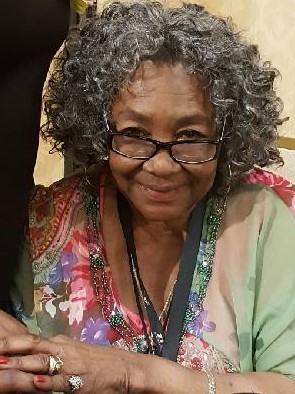
They called her the Gypsy Rose Lee of Detroit, yet exotic dancer Lottie the Body was world famous. Performing during the heydays of burlesque in the 1940s, ‘50s, and ‘60s, she traveled the globe and became a sort of clandestine celebrity. Some people may not have wanted to admit they knew who she was, her being so risqué and all, but they knew. Ask any eighty-five-year-old man if he ever heard of her. If he says “no,” he’s probably lyin’.
Lottie died at age 89 in 2020. She always said that today’s strippers have it all wrong with their “look-at-what-I’ve-got-that-you-can-have” attitude. She insisted it should be “look at what I’ve got that you can’t have,” saying that’s what made it striptease.
“Be a lady. Be classy. Be naughty but never nasty. That’s what made me famous.”
Indeed. Old photos reveal a drop-dead gorgeous African American performer with class galore. It was a combination of looks, talent, and personality that made Lottie a decades-long success on stage. Her costumes were elaborate until she’d peel down to one that was conservative by today’s standards, more than many women wear to the beach these days. She’d start in an elegant gown, take it off to something akin to a sparkly mid-century bathing suit, and maybe, if she felt like it, strip off her top to reveal sequined pasties. The epitome of the act was when she’d twirl the tassels on her pasties, leaving her audience breathless with delight. She was a fabulous dancer and was very athletic, which added to the energy of her show. Audiences – men and women – came to the clubs where she performed to be entertained with a class act, and Lottie did not disappoint.
But there was another thing that made Lottie a truly classy lady: She was a genuinely nice person. I first met her at the Golden Horseshoe “house of burlesque” in Harbor Springs, Michigan, in 1971. I was a lowly twenty-one-year-old college kid waitress, and she was the famous forty-year-old star of the show. I watched the same people – wealthy summer residents, yachters, servicemen, locals, music lovers – come back night after night. Sometimes she’d shimmy her fringed costume, dance like a devilish angel, and merely drop a shoulder strap before exiting the stage.
Oh yeah, they came back. They wanted to see those twirling tassels they’d heard about.
Lottie wasn’t like some of the other performers. She was friendly and chatty with the staff. Even me. She quickly figured out that I was in way over my head in that type of environment – I had to work and that was the only job I could find – and took me under her protective wing. I learned a lot that summer.
She’d worked alongside all kinds of famous people: Sammy Davis, Jr.; B.B. King; Aretha Franklin; T-Bone Walker; Della Reese; Louie Armstrong; the Four Tops; Fats Waller; Sarah Vaughn; Redd Foxx; Cab Calloway; Jackie Wilson; Dinah Washington; and so many more she couldn’t recall all of them. She served as emcee at early Harlem Globetrotters games and was married to Goose Tatum, one of the early players. Before Cuba became a Communist country, she met Fidel Castro and thought him a “sweet little man.” The Philippines’ first lady Imelda Marcos took her shoe shopping. She met civil rights activist W.E.B. DuBois while she performed at the historic recreation community for black people, Idlewild, Michigan. She was best friends with Christine Jorgenson, the first famous transgender American entertainer. Lottie performed all over the U.S., with Alaska being one of her favorite states; throughout the Caribbean; in the Pacific; around Europe; and in northern Africa. All of this and she would help me, a clueless college kid, clean tables at the end of my shift so we could go out to breakfast.
I felt humbled, honored, and happy that such a star would care about somebody like me and treat me as if I were her own daughter. Eventually, she told me to call her Mama Lottie, the nickname she used with her loved ones, and she called me her Baby Boo.
My Mama Lottie, former exotic dancer Lottie the Body, the 2017 Living Legend of the Burlesque Hall of Fame in Las Vegas, was so much more than a body. She embodied the heart and soul of a real woman. We could all, women and men alike, use more Lottie in us. In fact, a lot of Lottie.
So what did I learn from Lottie, the woman who was a second mama to me and a beautiful body to much of the world?
- First of all, not to be ashamed of my body. Although hers was perfection, Lottie always celebrated everybody just the way they were. There was no “I’m the drop-dead gorgeous diva for you to admire;” rather, it was “We’ve all got bodies, so let’s appreciate them.” Everybody felt comfortable around her.
- Secondly, I learned that not all strippers are divas, desperate, or depraved. A few were, but most were not. Certainly not Lottie. I never saw her so much as flirt with a customer. She was a professional who was friendly toward everyone. It seemed as if she was conducting her own kind of civil rights movement that invited everyone to come into her world. Gender, age, race, ethnicity, sexual orientation, religion, abilities, education level, financial status – none of that mattered. What mattered was spending good time together.
- Thirdly, Lottie taught me that dance is an expression of life. She reveled in getting everyone up off their bums to dance. Our favorite night was Thursday, maid and butler night, when the African Americans who worked for wealthy white people at their summer estates in that resort town had the night off. The place was electric! Nobody sat. She’d pull people up on stage; she’d encourage the audience to dance around their dinner tables; she’d jump off the stage and dance in the middle of the crowd. And those were the best tip nights for me, because as maids and butlers they knew the value of hard work. I was usually one of only a few white people in the room on those nights, yet I felt totally included and respected. It was magical, the most fun I’d ever had. And, yes, I eventually overcame my insecurity and shyness and occasionally got up on stage to dance.
- My fourth Lottie lesson was that women should live their lives as they please, not as society or their mother or schooling or a man or the media tells them they should. Well aware there were people who shunned her because of her race as well as her chosen profession – she endured some horrendously bigoted situations in all those years – she focused instead on those who accepted her. She’d experienced many more marvelous times and more good people than frightening times with ignorant cusses, as we called them. We often talked about how more women could benefit from knowing how to find and focus on the good people in this world.
- My fifth lesson from Lottie was that if two people love each other their sex life should be robust. She was married and adored her husband. She didn’t reveal any juicy bedroom secrets to a kid like me, even after many years of friendship, but there was no doubt she enjoyed connubial bliss. Occasionally, she reminded me to do the same, saying a couple’s spat or disagreement should never get in the way of that. And she did have some spicy stories to tell about her younger single days, some very sexy and some quite hilarious. Let’s just say she was not shy.
- The sixth lesson is more general. Enjoy living. Work hard. Laugh a lot. Treasure your friends and family. Eat what you want. Invite new people into your life. Don’t pass up s’mores over a campfire on the beach in the middle of the night. Tell ghost stories. Believe in ghosts and God. And most, of all, treat yourself with respect.
- The final, seventh lesson came in 2019 when I went to Detroit to visit with her after not seeing her in person for several years. We talked on the phone weekly and wrote letters back and forth because she loved letter-writing, but she didn’t travel anymore and I hadn’t been up there in quite a while. Although at age 88 she’d had some health problems, I discovered the same beautiful woman with sparkly brown eyes, velvety skin, and an exuberant personality that I had known for almost half a century. I saw that goodness doesn’t age and kindness never dies.
She once wrote, “Lottie the Body may have brought me fame, but Lottie the Woman has always cared most about one thing: sharing whatever gifts I have to make people happy…. I pray that you may have the same kind of love and happiness that I enjoy. I send my love and God’s blessings to you all.”
In her honor, let’s get up and do a little dance today. And every day after. Let’s celebrate life the way Lottie did – with joy and, most of all, with love.
Postscript: Lottie inspired me to use her stories to write a fictional trilogy, The Burly-Q Girls. It was such an honor to do so. The first book, The Burly-Q Girls: the 6, is now available on Amazon. The others will come out in the spring, The Burly-Q Girls: 6 Dicks, and next autumn, The Burly-Q Girls: 6’ Under, 2022. You can get your copies on Amazon in Kindle, paperback, or large print.
If you want to look her up, simply search for Lottie the Body and you’ll find her. There has never been another like her.
Traverse City, Michigan: One of my favorite places and here’s why…
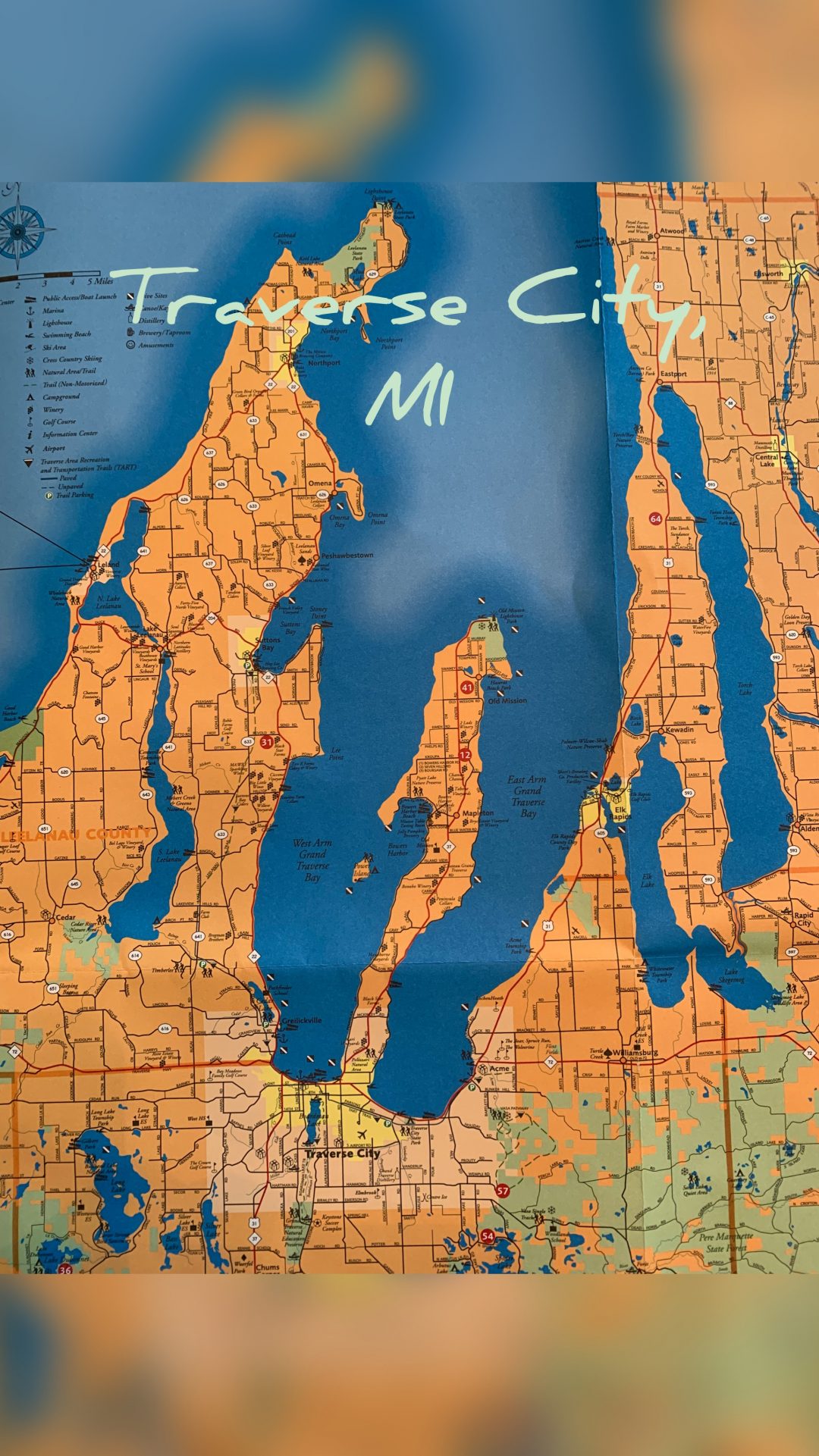
Are you wondering about all those Michigan places I write about in my some of my novels? Yes, it’s as beautiful “up north” as I describe. Even though I write fiction, I am not making that up. So I’ve made you a quick guide to some of my favorite places in Traverse City and its surrounding area, in case you want to go. There are many more things to do than mentioned, but I narrowed it down so you can plan a week’s stay. If you cannot make the journey in person, hopefully you’ll enjoy learning about this fascinating area from afar.
I was born and raised in Michigan, so have been visiting the Traverse City area all my life. I no longer live there but go back most summers to visit friends and family, and to do book signings. I also did a lot of research to make sure the history I wove into my novels was accurate, and doing that research led to fascinating discoveries. I’ve included links here that will take you to some of that history if you’re interested.
Here’s a Michigan map to get us started: https://www.michigan.org/regions-and-cities
Traverse City, in Town
This city on Grand Traverse Bay began as a lumbering community in the mid to late 1800s. It’s a lovely town with plenty of Victorian-era ambiance. History abounds.
Here’s a map depicting the historic areas – https://www.traversecitymi.gov/downloads/historic_neighborhoods_webmap.pdf
Street map – https://www.traversecitymi.gov/downloads/tcstreetmap.pdf
Of course, beaches on the bay and opportunities to enjoy summer water sports and winter sports are plentiful. But here are a few of my favorite places to visit and things to do.
- Grand Traverse Commons. This enormous Victorian-era structure, built in the late 1800s, originated as an “asylum.” With much of it now converted into stores, restaurants, and lofts, tours of the unrestored areas demonstrate was life was once like there. The stories of the “residents” ooze out of the walls, which instigated my novel Secrets of the Asylum. If you don’t want to take the tour, the shops and restaurants are worth the visit.
- Landmark Books in the Grand Traverse Commons. Of course, you knew I’d list my favorite bookstores. Primarily a used and classic book store, owner Paul also offers recent books about the area and especially about the asylum. It’s a great place to pick up good stories about this iconic place. https://landmark-books.business.site/
- Front Street. Stroll up and down this historic main street to find everything you want. Shops, restaurants, coffee shops, brew pubs, a classic movie theater, the old opera house, ice cream, fudge, and more.
- Horizon Books, a large bookstore on Front Street. I can browse around inside for hours. https://www.horizonbooks.com/
- Sleder’s Family Tavern. A staple in town since the late 1800s, a stop here is a must. One of my characters in Secrets of the Asylum, in the 1920s, had an interesting encounter here in the back room, which was then the “women’s room.” https://www.traversecity.com/listings/sleders-family-tavern/154
- The National Cherry Festival, around the Fourth of July. You won’t believe how much fun this can be. It’s like a small-town fair high on cherry wine. There’s even an air show most years. I saw the Navy’s Blue Angels, performing over the bay. I’ll never forget it. https://www.cherryfestival.org/
Old Mission Peninsula
Just outside of Traverse City are two peninsulas that stretch north into the bay, one on the east side of town and one on the west side. I’ll start with the east side, Old Mission.
- Old Mission General Store. You’ll enjoy spectacular scenery as you drive up the peninsula, where you’ll run into this store. It sits at the center of the Old Mission village. At the store you can get snacks, antiques, vittles, and more. https://www.michigan.org/article/trip-idea/things-to-do-old-mission-peninsula-ultimate-pure-michigan-guide
- Wineries, ten scattered along your way. Stop on your own or take a wine tour. I enjoy all the wineries, but my favorite is Chateau Grand Traverse. I’m prejudiced because my cousin Michael works there. But it is the oldest winery on the peninsula, and I love their wine. (Michael is not that old!) https://www.ompwinetrail.com/
- Old Barn Antiques. I have no idea why I stop at this place, seeing that I live in another state, fly into Michigan, and have no way of dragging anything home. But I adore this barn! If you’re an antique lover like me, you’ll want to stop here. Take a truck or trailer to haul things home. (There are plenty of other antique shops in the Traverse City area, too.) https://www.traversecity.com/listings/old-barn-antiques/413/
- Old Mission Lighthouse. This is the pinnacle of your drive up the peninsula. Climb to the top to take in the view. Amble along the lakeshore. Sit and relax a spell. Ahhh, it doesn’t get any better than this. https://www.missionpointlighthouse.com/
Leelanau Peninsula
This peninsula is on the west side of the city and is the larger of the two bayside peninsulas.
- Historic M-22. Drive up one side of the peninsula and down the other on this road. The scenery is stunning. There are several villages, most on the water and some that were or are fishing villages. You’ll also see farms, vineyards, forests, and miles of lakeshore. http://www.m22michigan.com/stories/travel_m22_leelanau_county
- Bay Books, in Suttons Bay. This is one of my favorite stops. In fact, the entire village is fun to stroll through. The owner of the bookstore, Tina, has a keen eye for selecting interesting reading. Her store is cozy, inviting, and relaxing. https://baybooksmi.com/
- Winery tours. With 25 wineries on the peninsula, tours are popular. It’s enjoyable to take a leisurely day to do this. Caution, though, it’s more than you can peruse in one day. (Or if you do, you’ll be too tipsy from sampling the goods to remember it.) https://www.michigan.org/road-trips/leelanau-peninsula-wine-trail
- Grand Traverse Lighthouse, at the tip of the peninsula. Climb up to the top for another fabulous view. Walk the grounds for a leisurely stroll. https://www.grandtraverselighthouse.com/
Sleeping Bear Dunes National Lakeshore
About thirty miles west of Traverse City you can enjoy soaring sand dunes along the shore of Lake Michigan. I can’t leave Michigan without climbing a dune and sticking my bare toes into the sand. The views are amazing. The lake is calming. The hiking trails offer nature at its best. https://www.nps.gov/slbe/index.htm
The Journey Ends?
No, it won’t end. You’ll want to come back.
I confess, I have not written about all these places in my novels. I got carried away here. (And there is so much more.) But I did include much of this in my historical romantic suspense novel, Secrets of the Asylum, available right here.Let yourself become immersed in the history and beauty of the place while enjoying a gripping family saga.
Next, I’ll give you a tour of my favorite places on Mackinac Island, which I wrote about in Secrets of the Island. (Yup, you see a trend here.) Until then, happy reading.
The Birth of My “Shades of Hope” Novella Collection
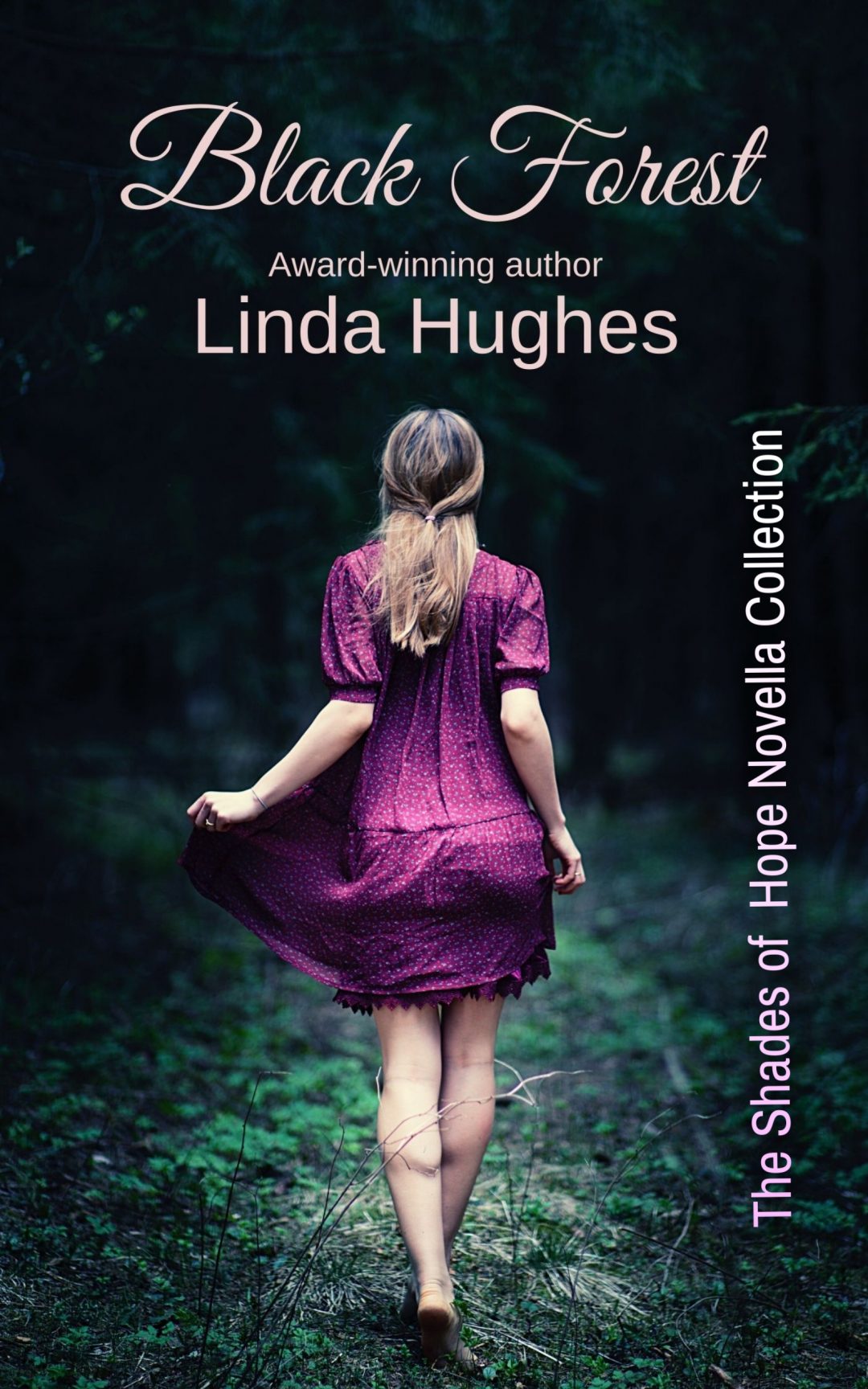
I may as well call it my “Covid Collection,” because these novellas were born during isolation in 2020 while the world was terrorized by the COVID-19 pandemic. “Shades of Hope” was not only my offering during a time of global devastation, it was my salvation. I had to believe there was indeed hope for our survival and wanted to provide that positive outlook for others. Thus, these stories demonstrate that no matter what we’re going through, we as human beings can and will survive.
The first one I wrote, Black Forest, had been on my mind for a long time after a friend told me she’d discovered that her grandmother had been a prostitute for the Nazis in Germany during WWII. The grandmother’s husband had been killed, she had six children, and selling her body was her only means of providing for her family. In this book, the heroine’s perseverence, resilience, and love of family will touch your heart.
The novellas can be read in any order, but the second one I wrote is Gold Mountain. This story rolled around in my head for years after I once worked in Alaska in the dead of winter. The majestic beauty of the place has stayed with me ever since. This story started out with a plan but shifted when children arrived on the scene. I fell in love with them and gave them more space than originally intended. I think you’ll fall in love with them, too.
Next is Lilac Island. If you follow my writing, you know I love Mackinac Island and go each year for the Lilac Festival. It was a given that I would write another story about it’s Victorian-era ambiance. Being the widow of a Vietnam veteran (my first husband died many years ago at age 33), it was time for me to write some of that experience into a heartwarming story. This calming setting was perfect.
Each novella stands alone, independent of the others, each set during a different era and in a different place with different characters. What they have in common is the promise of hope. There are three more to come. By the time you read the first three, the fourth will be published and ready for you. May that promise of hope be forever present in your own life.
Start here with the eBook or paperback of Black Forest. Enjoy reading!
Thanks to MyNorth for including Secrets of the Asylum in books to read
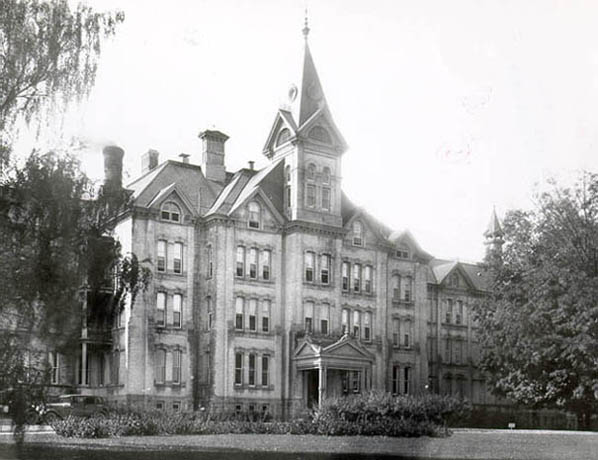
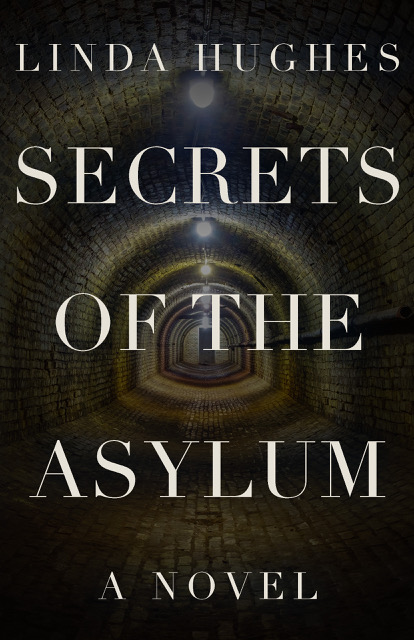
Brides and Brooms
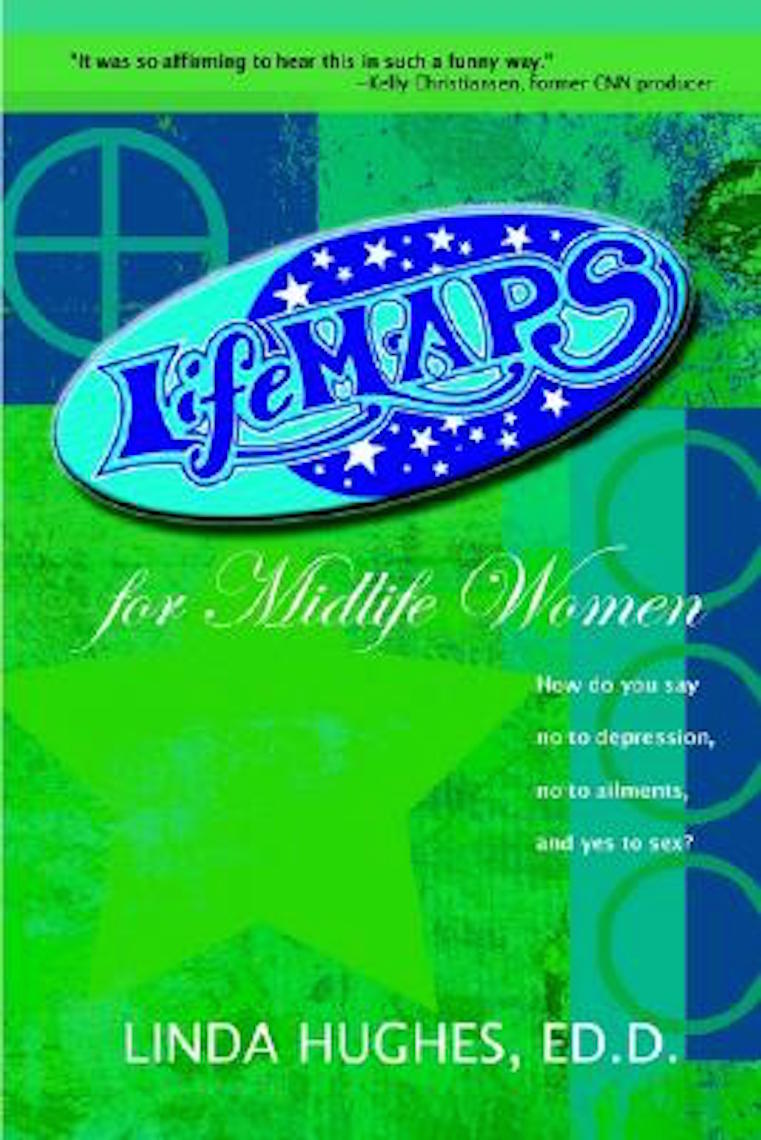
Halloween is almost upon us and I swear I’ve been haunted by articles about how ghastly midlife is for GenX women. I’ve been shown or accidentally run into three such missives lately that claim that it’s worse for them than it has ever been for anyone else.
Poppycock.
Where have those writers been for forty years? Apparently not paying attention to history, or talking to their elders, or doing enough homework to know that for eons women have been complaining about midlife, a time of life when things go awry on the bad hand and new awakenings occur on the good hand.
Realizing you’ve hit the halfway point of your life can indeed be daunting. But it’s nothing new. Especially for a woman who’s been busy juggling work, a home, and a family. No age group has the corner of the angst that can cause for some people. Scales of “happiness” were quoted, with women supposedly being more unhappy now than ever before. Oh please! The only difference is that today social media advertises a person’s unhappiness. We used to be expected to just keep it bottled up.
One article noted the incidence of divorce being higher than for generations past. Of course it is. Women now have the social, religious, legal, and economic means for getting divorced. They didn’t have that in the past. More divorce isn’t a measure of more unhappiness, it’s a measure of more freedom to get divorced when you’re unhappy.
In the 1980’s I did seminars for women about life’s transitions. I wrote a book called Surviving the Superwoman Syndrome. Then I wrote Action Plans: A Women’s Survival Guide. In the early 2000’s I did my Doctoral dissertation on self-development for midlife women and published LifeMaps for Midlife Women. I certainly wasn’t the first to address this issue. In my time there have been Betty Friedan, Gloria Steinem, bell hooks, and so many others. I’m wondering if those writers have even heard of them.
Do I think that all GenX midlife women think they have it worse than anyone else? Of course not. My hope is that they’ll start writing and share their important stories, too. We’re all in this together and need to help each other out.
Instead of haunting each other this Halloween, let’s celebrate our commonalities. And, most of all, let’s dance around the fire and have a good time.